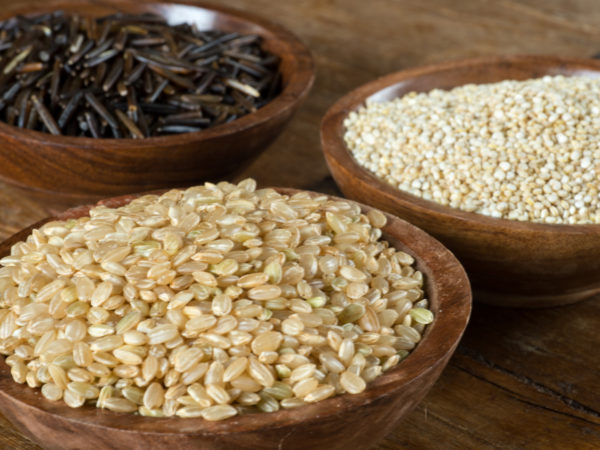What's Wrong with Whole Wheat?
In your book “Healthy Aging,” you recommend eating whole grains but not whole-wheat flour products. Why?
Andrew Weil, M.D. | November 29, 2006

I recommend eating whole grains because they’re a great source of important nutrients, including protein, fiber, vitamins, minerals, and, especially, carbohydrates that are low on the glycemic index (GI), a ranking of carbohydrate foods on the basis of how they affect blood sugar (glucose). This is important for many people because eating a lot of foods that are high on the glycemic index will produce spikes in blood sugar that can lead over time to insulin resistance. Insulin resistance is associated with obesity, high blood pressure, elevated blood fats, and an increased risk of type 2 diabetes, and other chronic diseases.
Grains in their natural form have a low glycemic index, while processed carbohydrates, including those made with flour or puffed grains, have a high GI. The reason is that it takes longer for digestive enzymes to reach the starch inside whole grains or grains cracked into large pieces, slowing down the conversion of starch to sugar.
True whole grains include wild rice, barley, quinoa, millet and wheat berries. You can be pretty sure you’re eating a natural grain with a low GI ranking if you have to chew it or can see grains or pieces of grains in food products. The more your jaw has to work, the better. But when grains are pulverized into flour, whether whole or not, their surface area expands dramatically, providing a huge, starchy surface area on which the enzymes can work. Consequently, the conversion to sugar happens very quickly.
Whole wheat bread and products labeled “whole grain” are usually made with flour. If you check a list of the glycemic index of various foods, such as the one at www.mendosa.com/gilists.htm, you’ll see that finely textured whole wheat bread has the same GI as white bread – about 70, making both high GI foods. I recommend cutting down on all products made with flour and increasing consumptions of grains in their more natural state.
Andrew Weil, M.D.










